Fri 06 / 01 / 17
Top 10 Tips for writing the perfect Design Brief
Elizabeth Nicholls from Nexus Design & Print gives us her top 10 tips for writing the perfect design brief.
Why is it that so many clients are terrible at giving a design brief?
As it’s a brand new year you might be thinking it is time to get your company’s brand and marketing in order. Whether you have a preferred design agency in mind or a friend down the road who’s handy with InDesign, to get your project started you will need to begin by writing a design brief.
Lots of very nice clients write very bad design briefs. That’s not a criticism, I suppose it’s just a natural result of having a less than thorough understanding of design. You’re not a designer after all, if you were you wouldn’t be writing the brief in the first place…
To make sure you cover all your bases when creating the brief, here’s a quick run through of 10 top tips you’ll need to cover in order get the result you’re after. Follow these through and not only will your designer thank you, but it should also ensure that your project gets off to a good start.
1. Know your purpose
Deciding the ideal outcome is key. For example: “I want to rebrand this product to appeal to millennials.” or “I want to refresh my Homepage design to increase online enquiries.” The designer should know the end goal for the project before they begin.
2. Communicate the context
It is crucial that your designer understands your business and its values, especially if it is the first time you’ve used them. Help them to see the full picture of who they are designing for to ensure the work they produce is relevant.
3. Understand the audience
Who is the target for this piece of design? Knowing this will ensure the work is tailored to their specific needs. It’s worth asking your designer if they have experience with working in a similar target group.
4. Share your brand guidelines
If you’ve worked with any designer or agency to develop your brand in the past, the chances are you’ll have a brand guideline. Any new designers will need these to get started.
5. Describe your idea
Use objective words and phrases that won’t be misinterpreted. Words like “fun”, “stylish” and “modern” are subjective and can mean different things to different people. Examples of designs from other brands to support your description can be really helpful too.
6. Detail your must-haves
It’s important to be clear about anything you definitely would or wouldn’t like included in the design. Spend time thinking about these important details and communicate them early on, so that crucial elements aren’t missed.
7. Think about your content
Often clients will supply their own text and images up front which is great. However, if you would like your designer to provide copywriting and photography then they will need to know at the briefing stage to ensure they factor these elements into the project.
8. Format and functionality
How will you use this piece of design? Something created for use online is unlikely to print correctly, equally something created for printing at size A5 is unlikely to scale up to print at A3. If the designer knows how you want to use the design, they can create the correct type of file.
9. Budget
No one likes giving a budget, but it’s important to know roughly how much you want to spend. “There’s no budget” or “we want to spend as little as possible” are not good ways to start the conversation about money.
10. Timescales
Possibly most crucial of all, you both need to discuss the deadline. If you appoint a designer who can’t comfortably meet your delivery date then the project could be doomed. Holidays and availability for meetings are good to get on the table as early as possible too.
The essential message that underpins these 10 points is that an open, honest line of communication makes a project a lot easier. Establishing a good mutual understanding from both sides early on means that needs are met on all sides - ultimately your designer’s aim should be to successfully tick all your boxes and ensure you are 100% satisfied with the end product.
Thank you to Elizabeth from Nexus Design & Print for providing this blog, for more information or to have a free, no obligation chat with their creatives, visit the Nexus website here.
You might also like:
If you want to contribute to the Chamber blog, contact us on hannah@brightonchamber.co.uk


